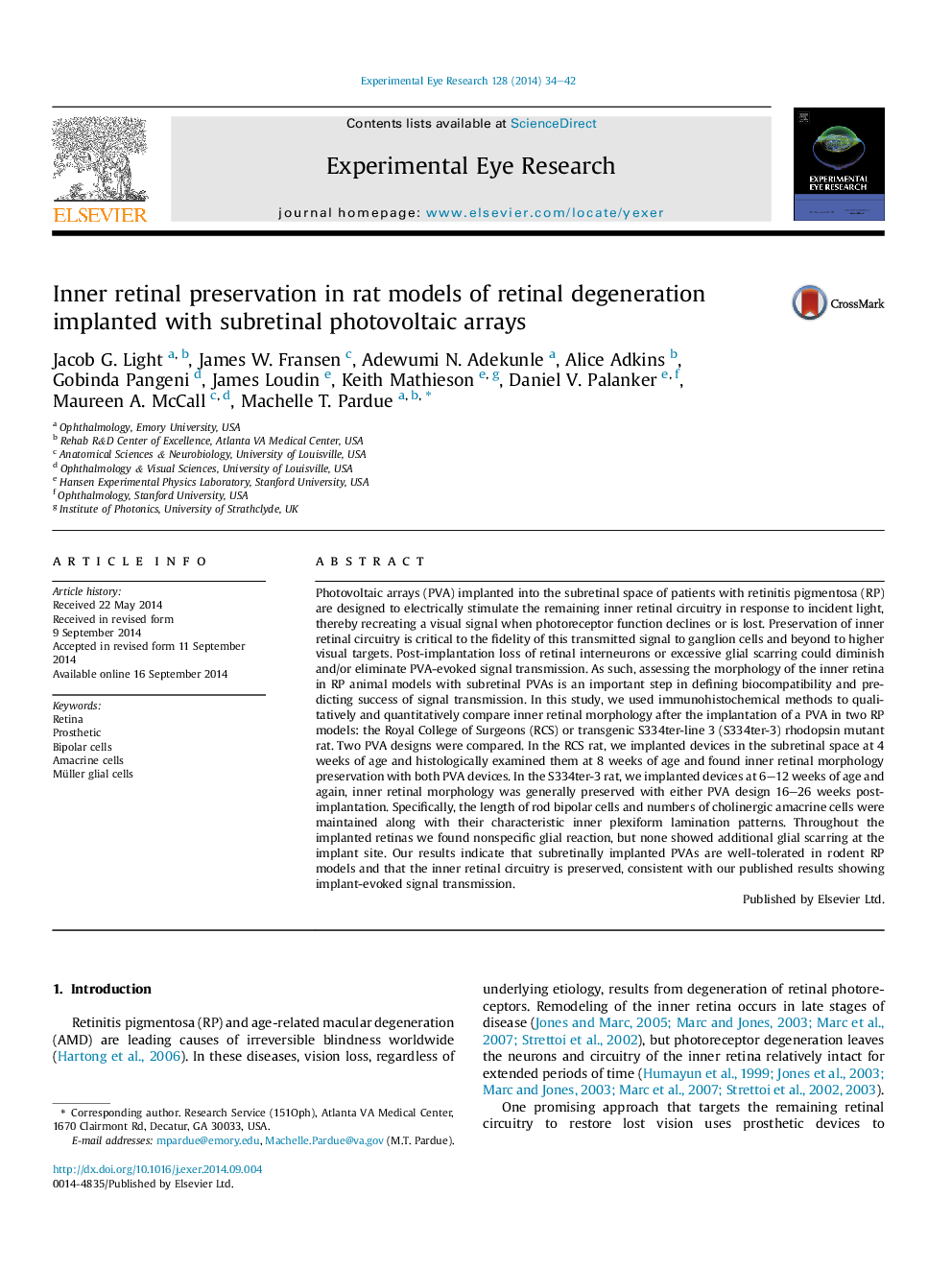| کد مقاله | کد نشریه | سال انتشار | مقاله انگلیسی | نسخه تمام متن |
|---|---|---|---|---|
| 6196758 | 1602594 | 2014 | 9 صفحه PDF | دانلود رایگان |
- Rat models of retinitis pigmentosa tolerate subretinal photovoltaic arrays well.
- Bipolar, amacrine, and Müller cell morphology maintained with implantation.
- Preserved inner retinal neurons consistent with implant-evoked signal transmission.
Photovoltaic arrays (PVA) implanted into the subretinal space of patients with retinitis pigmentosa (RP) are designed to electrically stimulate the remaining inner retinal circuitry in response to incident light, thereby recreating a visual signal when photoreceptor function declines or is lost. Preservation of inner retinal circuitry is critical to the fidelity of this transmitted signal to ganglion cells and beyond to higher visual targets. Post-implantation loss of retinal interneurons or excessive glial scarring could diminish and/or eliminate PVA-evoked signal transmission. As such, assessing the morphology of the inner retina in RP animal models with subretinal PVAs is an important step in defining biocompatibility and predicting success of signal transmission. In this study, we used immunohistochemical methods to qualitatively and quantitatively compare inner retinal morphology after the implantation of a PVA in two RP models: the Royal College of Surgeons (RCS) or transgenic S334ter-line 3 (S334ter-3) rhodopsin mutant rat. Two PVA designs were compared. In the RCS rat, we implanted devices in the subretinal space at 4 weeks of age and histologically examined them at 8 weeks of age and found inner retinal morphology preservation with both PVA devices. In the S334ter-3 rat, we implanted devices at 6-12 weeks of age and again, inner retinal morphology was generally preserved with either PVA design 16-26 weeks post-implantation. Specifically, the length of rod bipolar cells and numbers of cholinergic amacrine cells were maintained along with their characteristic inner plexiform lamination patterns. Throughout the implanted retinas we found nonspecific glial reaction, but none showed additional glial scarring at the implant site. Our results indicate that subretinally implanted PVAs are well-tolerated in rodent RP models and that the inner retinal circuitry is preserved, consistent with our published results showing implant-evoked signal transmission.
Journal: Experimental Eye Research - Volume 128, November 2014, Pages 34-42
